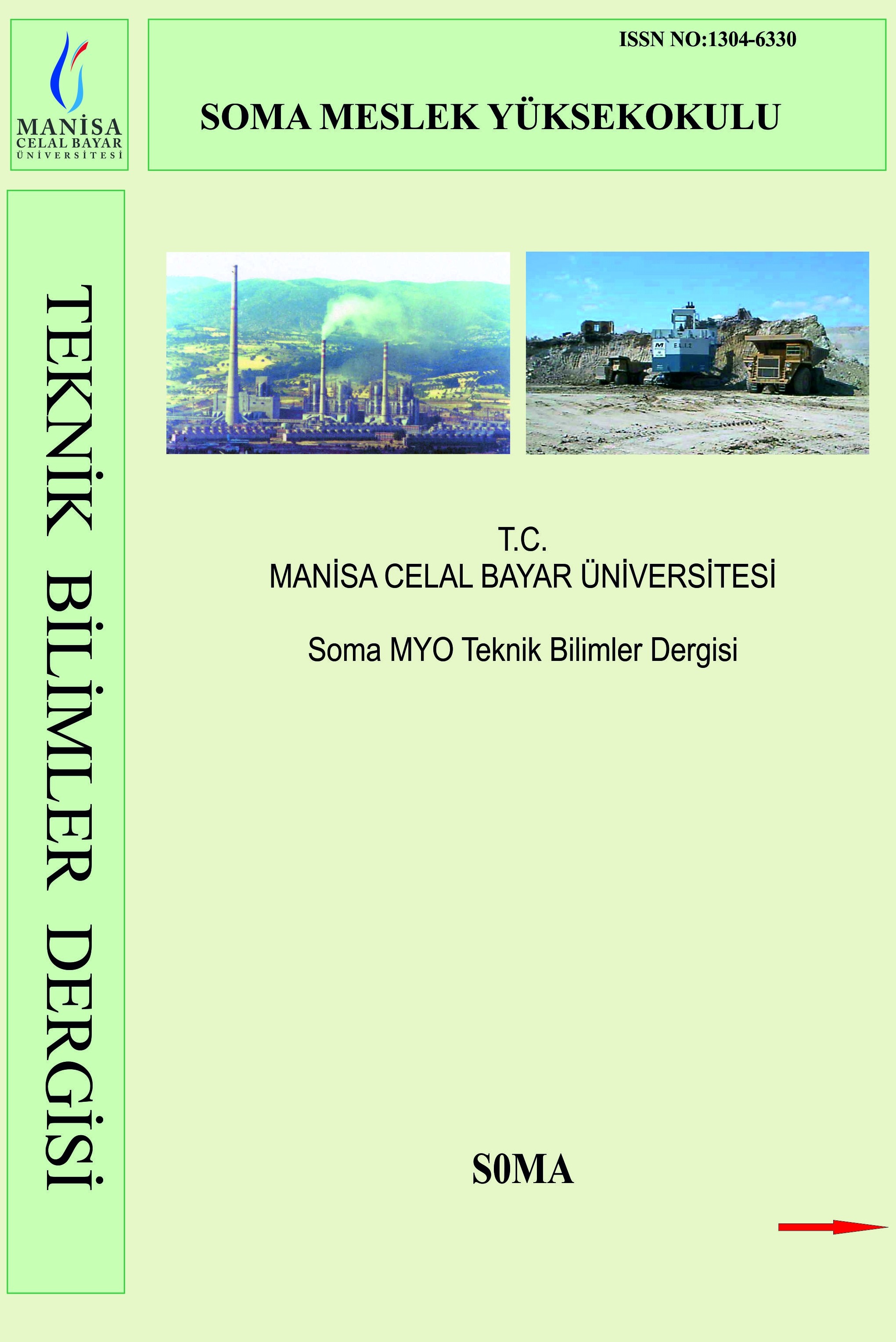İŞ GÜVENLİĞİ KÜLTÜRÜ VE ÜNİVERSİTELER
Üniversiteler, İş güvenliği kültürü, Dünya Sağlık Örgütü
OCCUPATIONAL SAFETY CULTURE AND UNIVERSITIES
___
- Amponsah-Tawiah, K. & Dartey-Baah, K., 2011; “Occupational Health and Safety: Key Issues and Concerns in Ghana”, Int. J. Of Business and Social Science, 2(14), pp119-126.
- ACS (American Chemical Society), 2012; Creating Safety Cultures in Academic Institutions, p57.
- Aytaç, S., 2011, “İş Kazalarını Önlemede Güvenlik Kültürünün Önemi”, Türkmetal Dergisi, Ekim 2011
- EU-OSHA, 2011, “Occupational Safety and Health culture assessment-A review of main approaches and selected tools, Luxembourg, p77
- EU-OSHA, 2017, “Work Related Accidents and Injuries Copst EU 476 Billion Euros a Year according to New Global Estimates, 04.09.2017, Luxembourg, Hamalainen, P., Takala, J. & Kiat, T.B., 2017, “Global Estimates of Occupational Accidents and Work-Related Illness 2017”, Workplace Safety and Health Institute, Finland, 921
- Fleming, M., 2001; “Safety Culture Maturity Model (OTO 2000-049), HSE Books, 2001
- Fleming, M., 2005, “Patient Safety Culture Measurement and Improvement: A “How to Guide”, Healthcare Quaterly Vol. 8, Special Issue, October 2005, pp14-19
- Guldenmund, F.W., 2010; “Understanding and exploring safety culture”, PhD Thesis, Delft University
- Health & Safety Executive (HSE), 1993, Organising for Safety –Third Report, Advisory Committee on the Safety of Nuclear Installations
- Health and Safety Executive (HSE), 2005, “ A review of safety culture and safety climate literature for the development of safety culture inspection toolkit (RR 367)
- Pala, K., 2005; “İSG Politikası ve Güvenlik Kültürü”, İş Sağlığı ve Güvenliği Dergisi, No.25, pp18-22
- Pekşen, Y. & Canbaz, S., 2005; İş Sağlığı ve Güvenliği Politikası ve Güvenlik Kültüründe Sosyal Diyalogun Rolü”, İş Sağlığı ve Güvenliği Dergisi, No.25, pp12-15
- Pidgeon, N.F., 1991; “Safety culture and risk management in organisations”, Journal of Cross-Cultural Psychology, 22, pp129-140
- Reason, J., 1998, “Achieving a safe culture theort and practice”, Work and Stress, 12(3), 293-306
- Wiegmann, A.D., Zhang, H., Thaden, T.V., Sharma, G. & Mitchell, A., (2002), Safety Culture: A Review, Technical Report prepared for Federal Aviation Administration Atlantic City International Airport, NJ, May 2002, p20
- ISSN: 1304-6330
- Başlangıç: 2004
- Yayıncı: Celal Bayar Üniversitesi
INVESTIGATION OF MECHANICAL PROPERTIES OF HAp COATINGS COATED ON TI6AL4V MATERIAL BY ANSYS PROGRAM
BİR MANYEZİT AÇIK İŞLETMESİNDE DELME VE PATLATMA MALİYET ANALİZİ
Cem ŞENSÖĞÜT, Elif Gökçe URKAÇ
HUMİK ASİTİN TOPRAKLARIN FİZİKSEL, KİMYASAL VE BİYOLOJİK ÖZELLİKLERİ ÜZERİNE ETKİSİ
Şenay AYDIN, Emine Dilşat YEĞENOĞLU
AÇIK OCAK KÖMÜR MADENLERINDE ÜRETİM SONRASI DÜZENLEMELER
İŞ GÜVENLİĞİ KÜLTÜRÜ VE ÜNİVERSİTELER
DETERMİNİSTİK DİNAMİK PROGRAMLAMA İLE BİR GIDA İŞLETMESİNİN ÜRETİM-STOK PROLEMİNE ÇÖZÜM
